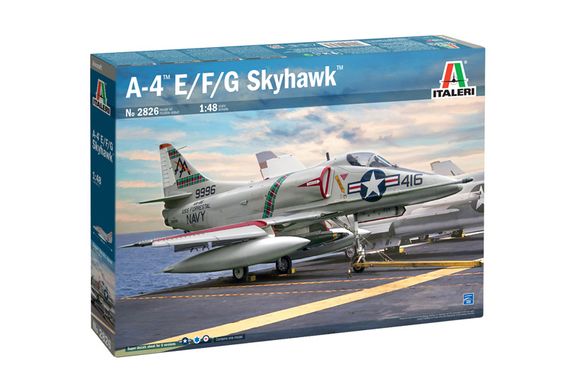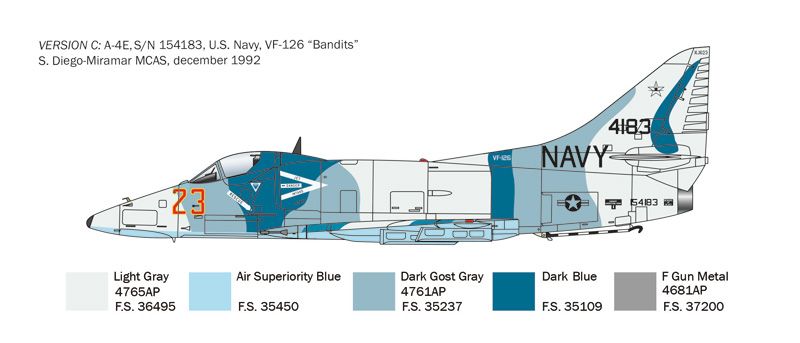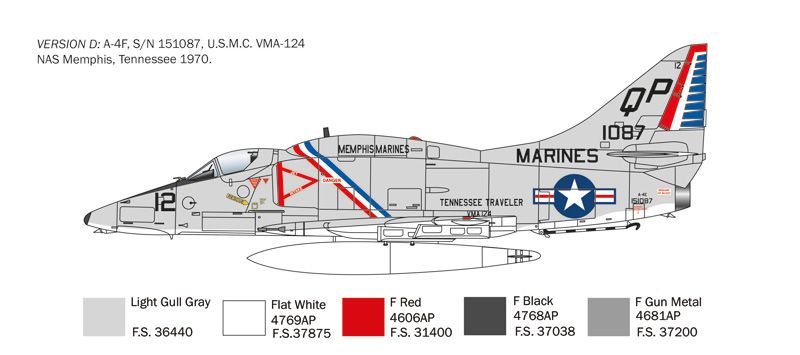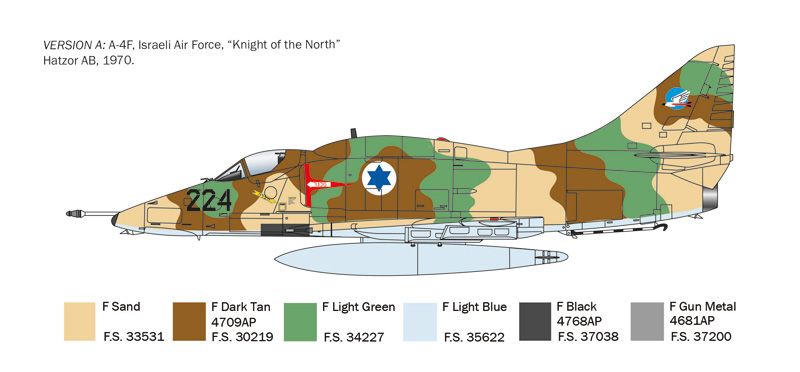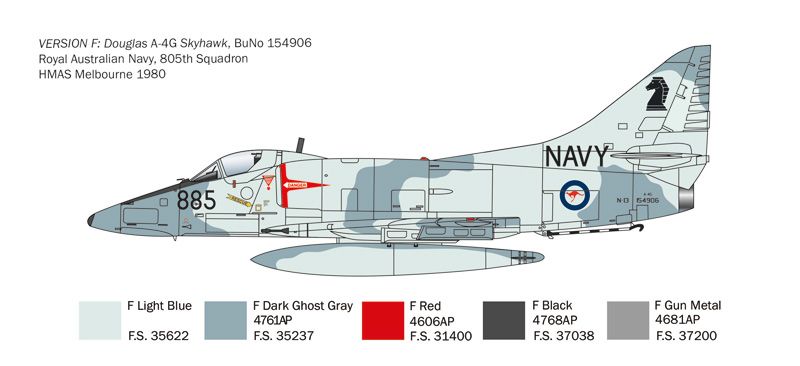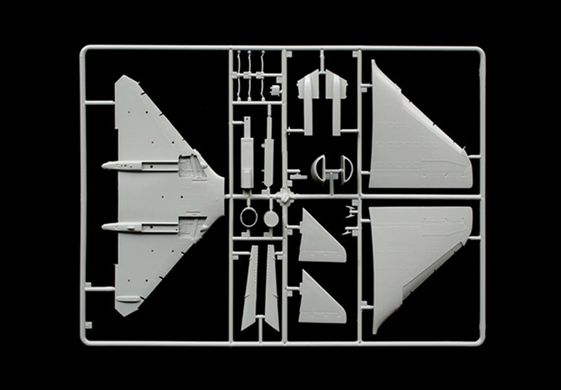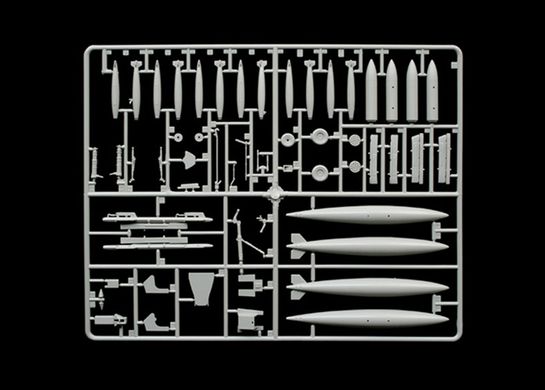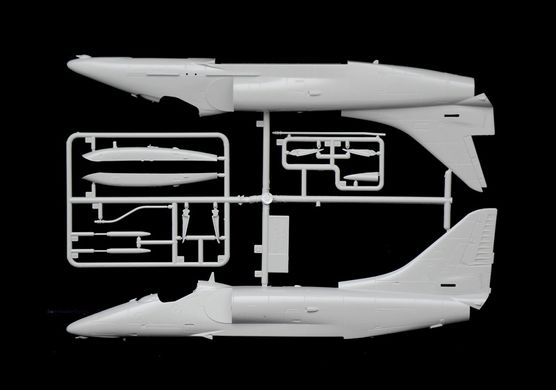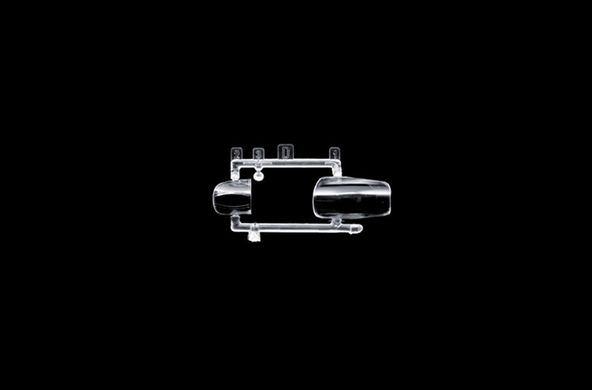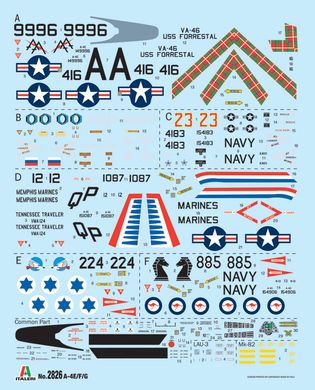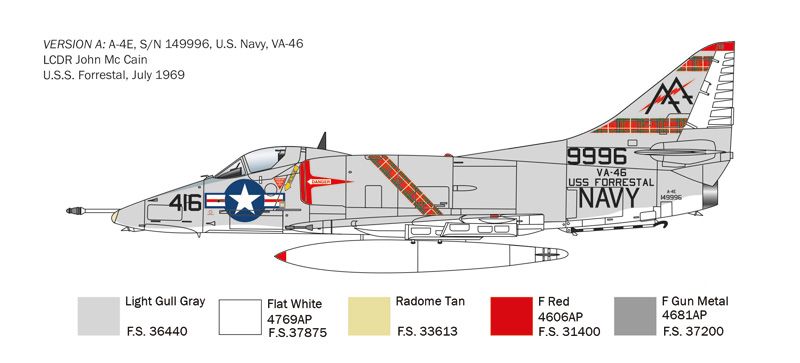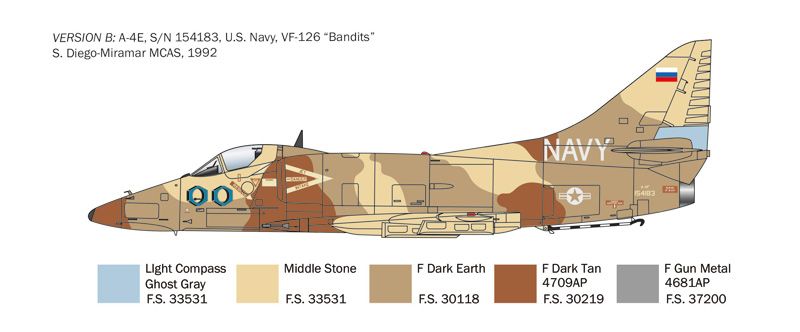The Douglas A-4 Skyhawk was developed in the 1950s and was one of the most famous light attack aircraft in aviation history. Its small and compact size made it extremely maneuverable and ideal for use on aircraft carriers. It featured a low-slung triangular wing, two small air intakes on the sides of the fuselage, and the use of a single Pratt & Whitney J52 turbojet engine. It was armed with two 20-mm. guns, and with hardpoints under the wings and under the fuselage, the Skyhawk could support a wide range of air-to-air, air-to-surface missiles, rockets and bombs. Due to its operational capabilities, the A-4 was a good commercial success and was adopted by several air forces around the world. In addition to the United States, it was used, in particular, by Australia, The McDonnell-Douglas A-4 Skyhawk is an American attack aircraft, the prototype of which first took to the air in 1954. During prototype testing in 1954, it broke the horizontal flight speed record for its aircraft class. A-4 is a single-engine machine of low-plan construction with a triangular wing, which during operation was characterized by high strength and resistance to damage, which won the recognition of pilots. Various versions of the A-4 Skyhawk aircraft participated in the Vietnam War, the Middle East conflicts (1967 and 1973) and the Falklands War (1982). They played a crucial role in the 1967 war, serving in the Israeli Air Force. Production ended in 1979, and so far around 2,900 combat versions and approximately 600 training versions have been produced. During the service, numerous versions were created, of which the A-4A (first production version), A-4F (improved electronics) and A-4G (training version) are to be replaced. Stationary armament: 2 Browning Mk 12 guns (caliber 20 mm); Suspension equipment (depending on the version) weighing from 3720 kg to 4155 kg. Airplane for export, min. to Argentina, Australia, New Zealand and Singapore. Technical data: Maximum speed: 1075 km/h; Ascent speed 28-43m/s, practical ceiling 14900m, maximum range: 3305km.















